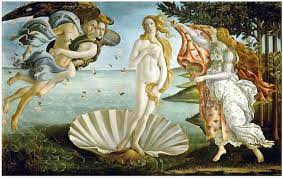Non Western Blog

A Virtual Exhibit of Traditional Japanese - Nonwestern Blog 1. The Great Wave off Kanagawa by Katsushika Hokusai (c. 1830-1833) The Great Wave off Kanagawa by Katsushika Hokusai (c. 1830-1833), possibly the most famous and iconic ukiyo-e print, is the first piece on display in this exhibition. This print, which is a part of the well-known series Thirty-six Views of Mount Fuji by Hokusai, shows a dramatic picture of a huge wave that is ready to break over three boats with Mount Fuji in the background (Smith, 2004). The strong blue and white waves, the delicate boat lines, and the distant silhouette of Mount Fuji all stand in stark contrast to each other, creating tension and energy that is both visually spectacular and amazement, inspiring. The Great Wave off Kanagawa by Hokusai is an eternal work of Japanese art that continues to charm people all over the world because to his creative use of perspective and color as well as his ability to portray the strengt...





